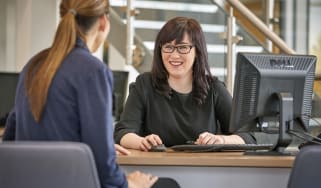Adaptive cruise control: how does it work and is it worth it?
Cruise control and adaptive cruise control can reduce fatigue over long journeys – this is what you need to know
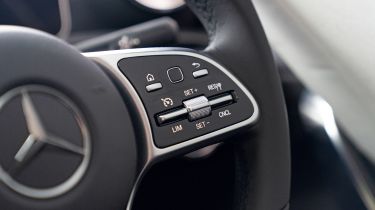
Cruise control can make all the difference on long motorway drives, allowing your car to maintain a steady speed while you rest your right foot. First introduced in the 1950s, it quickly became a must-have for drivers tackling long journeys, helping to reduce fatigue. As car technology has advanced, so too has cruise control, leading to the development of today’s cutting-edge adaptive cruise control (ACC) systems.
Unlike traditional cruise control, which sticks to one set speed, adaptive cruise control uses sensors and cameras to monitor traffic ahead and adjust your speed accordingly. If the car in front slows down, your car automatically does the same. Once the road clears, it smoothly returns to your chosen speed, making motorway driving much more effortless.
This feature is especially useful in heavy motorway traffic, where repeated braking and accelerating can be tiring. Many modern cars now include adaptive cruise control with ‘traffic jam assistance’, meaning the system can bring the car to a complete stop and set off again without the driver needing to intervene.
As we move closer to self-driving technology, adaptive cruise control is an important step towards cars that handle more of the driving for us. But even today, it’s a feature that can make journeys safer, smoother, and less stressful.
Different carmakers have their own names for the system – Audi’s ‘Adaptive Cruise’, BMW’s ‘Active Cruise Control’, and Tesla’s ‘Autopilot’, to name a few – but most work in a similar way. In this guide, we’ll walk you through the basics of how to use these systems and whether they’re worth having.
What is cruise control?
Lets start with basic cruise control. It’s a system that maintains the speed of a car automatically, with no need for the driver to use the accelerator pedal. Using controls found on or behind the steering wheel, the driver can set a desired speed that the car will continue to follow until you press the brake or accelerator pedals or turn it off.
Cruise control is fitted to nearly every new car on sale today, including both cars with an automatic or manual gearbox, although its functions are usually more limited in the latter. Most electric cars also come with cruise control.
It’s designed to be used on long A-road or motorway journeys, when prolonged use of the accelerator pedal could cause cramp or soreness in the driver’s right foot. Once a speed has been set, the driver can relax their foot and focus on controlling the car’s steering. The first cruise control systems held the throttle open mechanically, but modern systems are computer-controlled. Many cruise control systems will only activate above a certain minimum speed, usually around 25 to 30mph.
What is adaptive cruise control?
Adaptive cruise control (often abbreviated to ACC) takes cruise control and throws in a few extra features.
The ‘adaptive’ part of the name refers to ACC’s ability to automatically adjust your car’s speed to match the traffic ahead. It does this by using lasers, cameras or radar mounted in the front bumper to track the speed and position of the vehicle in front. The information from these sensors is fed to your car’s computer, which can then automatically match the speed of the vehicle in front and maintain a safe distance. Many systems allow the driver to set their preferred distance to the vehicle in front.
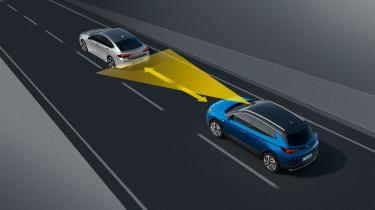
If the vehicle ahead slows down, the driver’s car will also slow down without the need to use the brake pedal. If the vehicle ahead speeds up, the driver’s car will only speed up until it reaches the limit set by the driver. However, only systems paired with an autonomous emergency braking (AEB) system will automatically perform an emergency stop if the car ahead comes to a sudden halt. In 2024, AEB was made a legal requirement for all new cars sold in the UK and the EU.
Adaptive cruise control is sometimes referred to as ‘dynamic’ cruise control, while other automakers use their own names; Mercedes calls it ‘Distronic Plus’ and Porsche, ‘Porsche Active Safe’. Despite the futuristic name, Tesla’s basic ‘Autopilot’ is essentially adaptive cruise control combined with lane-keeping assistance – another modern safety system.
Some vehicles even have ‘Traffic Jam Assist’, an extension of adaptive cruise control that can automatically slow the car to a halt as well as accelerate and brake at low speeds in congestion, reducing driver fatigue. It’s worth noting that after coming to a halt for more than a few seconds, safety requirements mean driver intervention is usually required; squeezing the accelerator should allow Traffic Jam Assist to resume.
Are cruise control and adaptive cruise control worth it?
The majority of drivers will find basic cruise control to be a very useful system. It has a noticeable impact on fatigue when driving over long distances, helping you to remain focused and reducing foot cramps. Even if you never drive on the motorway, cruise control is likely to be a valuable feature when you come to sell your car, so we think it’s worth having.
Adaptive cruise control takes the benefits of regular cruise control but adds an extra layer of convenience and safety. You don’t need to worry about slowing down manually as the car will take care of this for you. We think it’s well worth it – especially if you regularly take long motorway trips. Thankfully, plenty of modern cars come with adaptive cruise control fitted as standard, but used-car shoppers might also want to seek out a model fitted with the system.
How do I use cruise control?
Check your car’s handbook for the location of the cruise control buttons as they differ from vehicle to vehicle. They are often found in an easy-to-access location, such as on the steering wheel or column stalk, to make them quick and safe to use.
The system can be overridden at any time by pressing on the brake pedal, so you should keep your foot close to the brake in case of emergencies. There may be differences in controls between different manufacturers, so always read your car’s handbook first. Some typical cruise control buttons include:
- On/off: This activates the system, but probably won’t hold you at your desired speed. Turning it on will almost always be accompanied by a dashboard light.
- Set: Once the system is switched on, pressing the set button should tell the car to hold the current speed. In most cars this will turn the dashboard indicator green.
- Cancel: This pauses the cruise control, so you have complete control again, without turning cruise control fully off. The cruise control should still remember the speed you chose to cruise at.
- Res or resume: Pressing this will see the car accelerate back up to the speed you chose before hitting the cancel button or pressing the brake pedal. You'll still need to change gears in a manual car if necessary. An automatic gearbox will change gears for you.
- Up and down arrows or ‘+’ and ‘-’: With cruise control activated, use these to increase or decrease the car’s speed. Single presses often increase or decrease the speed in small increments, while holding the same button or stalk changes it in increments of 5mph or even 10mph. Of course, this varies from one model to another.
Cruise control is best used on long stretches of motorway and should be used to maintain a safe speed while the driver pays full attention to their surroundings. Drivers should not treat cruise control like an autonomous driving system, and the driver needs to pay as much attention to the road when using cruise control as they do with regular driving.
What is a speed limiter?
Some cars are fitted with a speed limiter, either alongside cruise control or on its own. As with cruise control, you set the maximum speed you’d like to travel at, but unlike cruise control, you're still required to press down the accelerator.
This is ideal for busy speed-limit zones, where you may want to maintain complete control of your speed without exceeding the limit. Squeeze the accelerator, and your car will simply reach your chosen speed and stop accelerating. However, pressing the throttle pedal all the way down will override the system – it’s a fail safe designed to let you accelerate out of trouble if needed.
What about Intelligent Speed Assistance?
Like Autonomous Emergency Braking (AEB), Intelligent Speed Assistance (ISA) is another mandatory safety feature fitted to every new car sold in the UK and the EU from 2024. Unlike a traditional speed limiter above, the ISA system uses your car’s GPS and traffic sign recognition cameras to determine the road’s speed limit. The ISA system then alerts you if you exceed the speed limit with an audible warning.
In some cars, the system will prevent you from exceeding the speed limit in the first place. This can be overridden in certain situations when the driver pushes hard on the accelerator pedal, and it can be turned off entirely. However, the system is automatically reactivated every time you start the car.
Since July 2024, it has been a legal requirement for every new car sold in the UK to come with Intelligent Speed Assistance, including unsold new cars sitting in dealerships that will need to have the system retrofitted.
Frequently Asked Questions
Car technology made simple…
Recommended
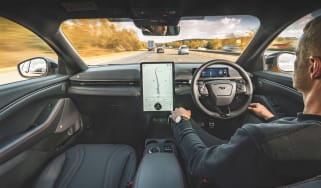
In-car safety assistance systems leaving drivers confused and dissatisfied
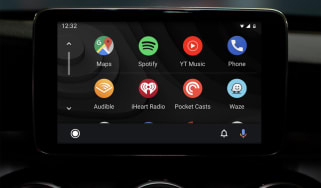
What is Android Auto? Apps, music and new gaming features
Most Popular
Tips & advice

Car dashboard warning lights: what does each symbol mean?
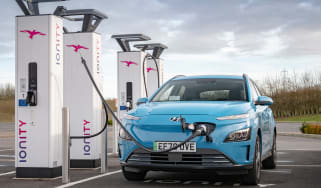
Electric car charging stations: public networks, charger types, apps and maps
